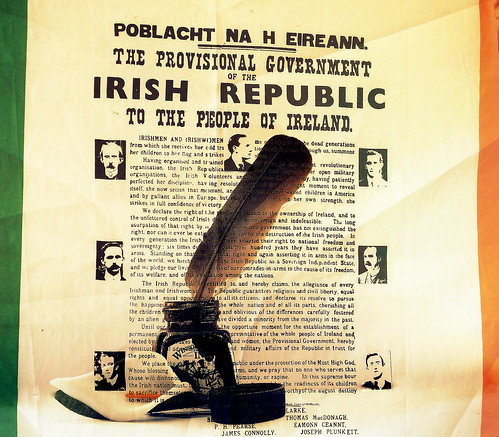 Barry Burke via Compfight
Barry Burke via Compfight
Introduction
The Irish Free State was an independent state established on 6th December 1922
under the Anglo Irish Treaty of December 1921.
That treaty ended the Irish War of Independence
between the forces of the Irish Republic and the British forces.
The Easter Rising in 1916 had not been popular with the public.
But the execution of the leaders, changed people’s minds
This is the story of two sisters, with links to Greystones,
who were close to those fighting for Irish freedom
in the lead up to the foundation of the Irish state.
They were the Gifford Sisters; Muriel and Grace.
You can read about their stories below or download their stories here:
Two Sisters; Their Story & Their Place in History
What were the Gifford family links to Greystones?
1.They used to come to Greystones on holidays as children every summer.
There they learned to swim.
While their father took to teaching the boys,
their mother appointed a woman called Ellen,
who ensured the girls, would all become strong swimmers.
2.Muriel and Thomas had married on January 31, 1912.
There is a letter from Éamon De Valera addressed to Thomas Macdonagh
at Annaville, Church Rd., Greystones, dated 17th September 1915.
3. Among Thomas Macdonagh’s family papers there are photographs from 1915
of Thomas Macdonagh’s wife Muriel swimming in the sea at Greystones
and ‘dipping’ her baby daughter Barbara in the water.
Muriel Gifford
Muriel was married to Thomas MacDonagh.
He was one of the leaders of the 1916 Rising.
Muriel and Thomas’ son, Donagh MacDonagh, was born on the 12th November, 1912.
Their daughter, Bairbre, was born nearly three years later on the 24th March, 1915.
Muriel didn’t know that her husband was involved in planning the 1916 Rising.
Muriel last saw her husband on Easter Sunday 1916
He said:
‘I may or may not see you tomorrow – if possible, I will come in the morning.’
He did not say anything about the Revolution. She never saw him afterwards.
For his part in the Rising, Thomas MacDonagh was executed
in the Stonebreakers’ Yard in Kilmainham Jail.
A British officer was reported to have said afterwards:
‘They all died well, but MacDonagh died like a prince’.
Very tragically, year later Muriel drowned accidentally on the beach at Skerries
For the rest of her daughter’s Bairbre’s life, she kept a little eau-de-cologne cardboard box.
Inside were the seashells she had collected with her mother in Skerries in 1917.
Grace Gifford
Joseph Mary Plunkett and Grace Gifford were to have a joint wedding
with his sister Geraldine Plunkett and her fiancé Tom Dillon,
on Easter Sunday, April 24 1916.
Joseph Plunkett felt it would not be fair to go ahead with their wedding
as there were rumours of a possible rising.
So he postponed the wedding.
While Geraldine and Tom went ahead with their wedding,
he took part in the Rising.
Sentenced to death for his part in the Rising,
Joseph Mary Plunkett and Grace Gifford were given permission to marry
the night before his execution.
Grace said later
“We, who never had enough time to say what we wanted to each other,
found that in that last ten minutes we couldn’t talk at all.”
This sad story was one of a number that changed public opinion and meant
there was increasing support for what had been an unpopular rising to begin with.
Many history books tell the story of
Thomas MacDonagh and Joseph Mary Plunkett.
We believe Muriel and Grace Gifford deserve their place in history too.
Kitty Kiernan and Sinéad De Valera found themselves involved
in the fight for Irish freedom through people in their lives.
Click on THIS link to read their stories.

